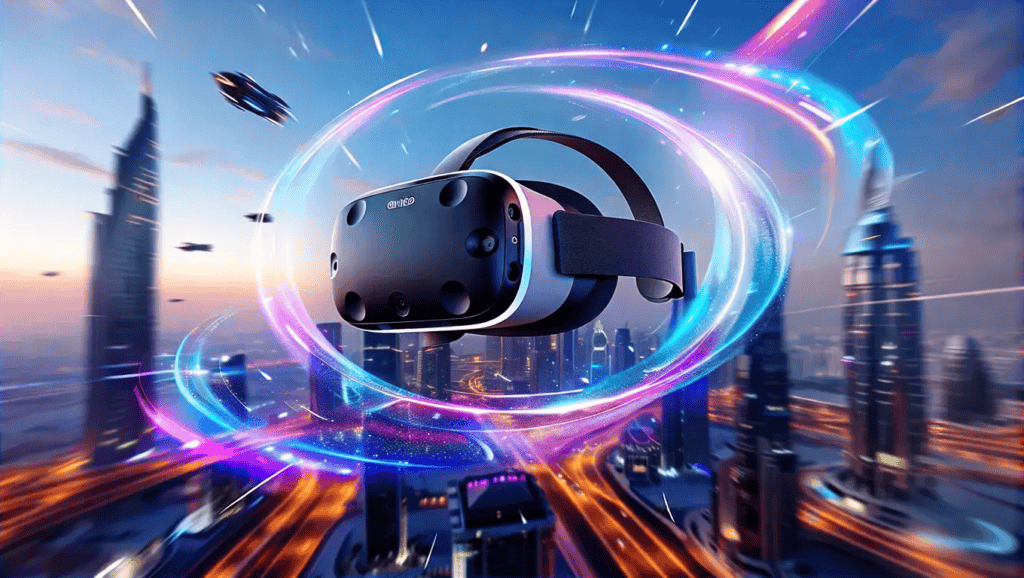Neural Earbuds: Are We Ready for Headphones that Read Our Minds?
An Exploration of Naqi Neural Earbuds and the Brave New World of Brain-Computer Interfaces (BCIs) Brace yourselves, humans of Earth. Just when we thought we’d seen it all with AI suggesting our playlists and facial recognition unlocking our phones, along comes Naqi Logix with a shiny new tech toy: neural earbuds. These bad boys claim to read our neural signals so we can think our way through our digital devices. Naqi Logix has invented wearable tech aimed at enhancing user experience through innovative devices, specifically focusing on Naqi Neural Earbuds. If you’ve ever fantasized about controlling your devices with sheer brainpower, congratulations—your sci-fi dreams (or nightmares) are here. But let’s pause and consider: do we really want wearable tech that can pick up on our brain activity? I mean, really? Let’s dive deep into this questionable, brain-bending future that Naqi Logix is peddling, and see if these neural earbuds are about to make us superheroes… or just super paranoid. Welcome to Brain-Computer Interfaces: A Love-Hate Relationship with the Future Before we dive into the Naqi Neural Earbuds specifically, let’s tackle the elephant in the room: brain-computer interfaces (BCIs). BCIs are devices that let us control computers, smart home electronics, and even IoT devices just by thinking. Imagine: with a little help from functional near-infrared spectroscopy (say that five times fast), your brain becomes the ultimate hands-free remote. Sounds cool, right? But let’s not forget, the dark side of this futuristic playground: BCIs could potentially log every twitch of neural activity, like a nosy neighbor reading your diary. It’s like brain surgery… minus the surgery, for now, thanks to non-invasive alternatives. (I’ll admit, “non-invasive” sounds better than a drill to the skull.) Meet the Company Called Naqi Logix: The People Giving Your Brain Superpowers (Whether You Like It or Not) At the forefront of this BCI revolution is a company called Naqi Logix, led by none other than their Chief Innovation Officer, Dave Segal. This company has somehow convinced us all that neural earbuds are the next big thing. You see, these neural earbuds enable users to control various devices using their brain activity. Need to change the track? No problem, just think it. Want to navigate computers hands-free? Naqi Logix has you covered. Naqi Logix co-founded this concept under the grand vision of “invisible input methodology.” In other words, they’re bringing us invisible interfaces that pick up on our brain signals and act accordingly. Imagine standing in line at the grocery store, just silently summoning the next song in your playlist while everyone around you wonders what’s up with your thousand-yard stare. What are Neural Earbuds? Neural Earbuds: The Wearable Tech We Didn’t Ask For These are the only neural earbuds on the consumer market right now (thankfully, or should I say “for now”). Artificial intelligence plays a crucial role in enhancing the functionality of these earbuds, making them more intuitive and responsive. While the earbuds claim to offer users an “earbud superpower,” what they actually do is interpret electrical signals from the brain—like having a mind-reader, but one you paid for. Naqi Logix assures us it’s non-invasive, but come on, it’s still one step closer to that sci-fi dystopia where companies don’t just read our data, they read our minds. Naqi isn’t alone, though. Companies working on this technology seem genuinely convinced we need brain-controlled interfaces for everything, from our mobile devices to flight simulators. Because, yeah, that’s what we need: more technology controlling our lives, right down to our electrical signals. How Neural Earbuds Claim to Work (And Why That’s Kind of Terrifying) So, how do these neural earbuds work? Well, in theory, they read neural signals and translate them into commands that can be used to control digital devices, whether that’s a computer, mobile device, or smart home IoT devices. With advanced BCI technology, they claim to use a kind of brain-computer interface to interpret thoughts as commands without any invasive brain implants. Here’s where the tech jargon hits the fan: Naqi Logix’s neural earbuds supposedly tap into functional near-infrared spectroscopy, reading changes in blood flow in your brain to gauge your intentions. It’s like a lie detector… but in your ears. So now, every little thought you have might end up controlling your devices. Let’s hope they don’t invent a “cancel thoughts” button anytime soon, huh? Benefits of Neural Earbuds Types of Brain-Computer Interfaces Neural Earbuds and Privacy: What’s to Stop Your Earbuds from Ratting You Out? Let’s get one thing straight: these neural earbuds have “privacy issues” written all over them. Sure, Naqi Logix promises these earbuds will only read the useful brain signals for specific tasks, but let’s face it, we’re opening Pandora’s box here. How much of your data is being processed? And what stops it from processing more than what you bargained for? Neural earbuds could accidentally pick up random thoughts. Imagine you’re daydreaming about lunch while you’re trying to focus on work, and suddenly your earbuds start scrolling through recipes on your screen. Awkward much? Disorders of Consciousness and Neural Earbuds What’s Next? The Strange Future of Human-Machine Interfaces Welcome to the world of human-machine interfaces, where users interact with devices without lifting a finger. Not long ago, “hands-free” meant using a Bluetooth headset. Now it means telepathic navigation of our devices. If Naqi Logix has its way, BCIs will become as common as smartphones. And it doesn’t stop at controlling your digital world. Naqi’s neural earbuds have potential applications in everything from e-sports to even flight simulators. That’s right, we’re talking about playing video games or navigating flight simulations with just a few flickers of brain activity. Because nothing says “stress-free gaming” like neural lag when you’re about to score that final point. What Could Go Wrong? The (Literal) Nightmare of Brain-Controlled Computers With Naqi’s neural interface, your computer screen might suddenly turn into a mind-mirroring nightmare. Imagine brain implants and neural signals misfiring mid-task. You’re trying to send an email, and bam!—your earbuds accidentally send a message to …
Neural Earbuds: Are We Ready for Headphones that Read Our Minds? Read More »



